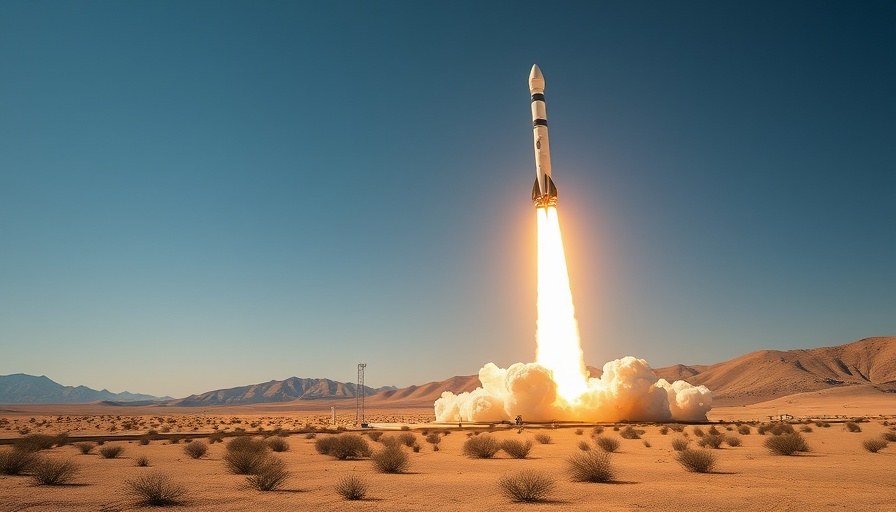
The Countdown to NS-30: Blue Origin's Milestone Space Tourism Flight
As of February 25, 2025, Blue Origin continues its push into the emerging space tourism market with its 10th crewed flight, designated NS-30. This mission not only showcases the ongoing advancements in private space endeavors but also highlights an era where space travel could soon become as accessible as air travel. With the launch window opening at 10:30 a.m. EST, anticipation builds for another significant leap in commercial spaceflight.
What to Expect on This Groundbreaking Journey
Blue Origin's suborbital New Shepard vehicle is designed for a brief journey, ascending to the Kármán line — the internationally recognized boundary of space — before re-entering Earth’s atmosphere. Passengers on this flight will experience a total of 10 to 12 minutes of weightlessness. During this thrill-ride, they will witness the magnificent view of Earth suspended against the backdrop of space, a feat that not many have embraced until now. This flight is expected to carry six brave souls, each with unique stories and backgrounds, contributing to this space narrative.
Meet the NS-30 Crew Members
The confirmed crew includes a blend of seasoned travelers and notable personalities, each embarking on a journey that transcends the ordinary. Returning to the spacecraft is Lane Bess, a venture capitalist on his second trip. Other notable passengers include:
- Jesús Calleja: A Spanish television host and mountaineer, known for his adventurous exploits across the Seven Summits and polar regions.
- Elaine Chia Hyde: An entrepreneur and physicist whose aim has always been to explore uncharted territories in media and now, outer space.
- Dr. Richard Scott: A reproductive endocrinologist with a robust academic background, lending a unique perspective to the journey.
- Tushar Shah: A New York hedge fund partner and physics enthusiast, adding a layer of financial acumen to the mix.
While Blue Origin has yet to unveil the identity of the sixth passenger, speculation is rife, stirring curiosity surrounding who will join this elite group of explorers.
The Costs and Competition of Space Tourism
As we dive deeper into the realm of space tourism, the financial aspect cannot be overlooked. While the cost of the New Shepard ticket remains undisclosed, Blue Origin’s primary competitor, Virgin Galactic, charges approximately $600,000 per seat for a similar suborbital experience. This positioning raises questions about market accessibility and the potential for safe, affordable travel beyond our planet.
Final Thoughts: The Future of Space Exploration
The NS-30 mission exemplifies the rapid advancement of commercialization in space travel. With continued innovations, the prospect of regular spaceflights will not just remain a luxury for the wealthy few but may pave the way for broader participation in this groundbreaking experience. As we look forward to the live launch via Blue Origin's streaming channels, it’s a reminder that humanity stands on the brink of a new frontier. The opportunity to explore beyond our planet is more tangible than ever, and the innovations in this field are just beginning to unfold.
 Add Row
Add Row  Add
Add 


Write A Comment